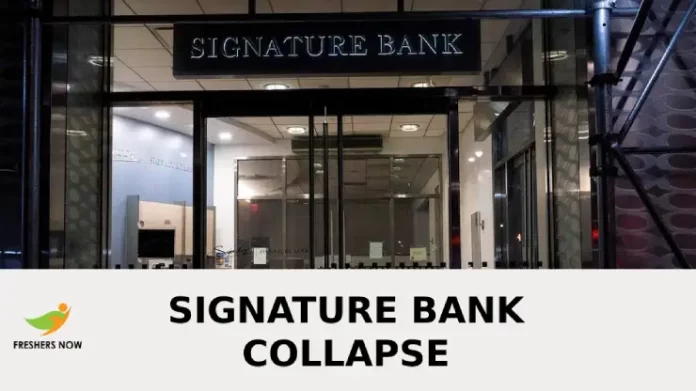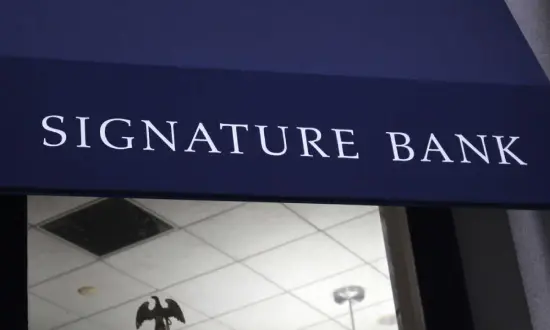
Signature Bank Collapse: Signature Bank experienced a massive withdrawal of over $10 billion in deposits from its customers on Friday due to their concerns about the abrupt failure of Silicon Valley Bank. This deposit run resulted in the third-largest bank failure in U.S. history. To safeguard the stability of the U.S. financial system and protect depositors, regulators announced on Sunday that they were taking over Signature Bank.
★★ Latest Current Affairs ★★
Former U.S. Rep. Barney Frank, who is a board member, revealed that the unexpected action taken against Signature Bank left its executives stunned. Signature Bank is headquartered in New York and has strong connections to the legal and real estate sectors. As per a regulatory filing, the bank had 40 branches and held assets worth $110.36 billion, along with deposits totaling $88.59 billion at the conclusion of 2022.

What caused the sinking of Signature Bank?
- The shutdown of Signature Bank by financial regulators in New York on Sunday is widely believed to be linked to the failure of Silicon Valley Bank. Anxious depositors hastily withdrew their funds from Signature Bank, causing its stock to plummet. This collapse of Silicon Valley Bank was anticipated to have ripple effects on numerous other small and regional banks throughout the United States.
- With news of Silicon Valley Bank’s financial difficulties circulating last week, clients of Signature Bank who were in business started to contact the institution, inquiring whether their deposits were secure.
- The depositors were alarmed as the majority, much like the business customers of Silicon Valley, had deposits exceeding $250,000 in their accounts. The Federal Deposit Insurance Corporation (FDIC), which took control of Silicon Valley, only provides insurance coverage up to $250,000 for deposits.
- The managers of Signature Bank were taken aback by the regulator’s abrupt decision to close the institution, which they became aware of only shortly before it was publicly announced. Despite experiencing a large volume of deposit outflows on Friday, the situation had improved by Sunday. The bank’s leadership had anticipated being able to withstand the crisis, as the outflows had subsided.
- In 2018, Signature Bank ventured into the business of accepting deposits of cryptocurrency assets, making it one of the rare financial institutions to do so. However, that turned out to be a significant decision since the value of crypto assets plummeted after the FTX crypto exchange collapsed and a subsequent criminal probe. Moreover, the recent voluntary closure of Silvergate Bank, another cryptocurrency-centric bank, exacerbated the concerns of Signature Bank’s depositors. The bank’s digital asset-related client deposits totaled $16.52 billion.
- Following the collapse of FTX, which had accounts with Signature Bank, the bank had already been attracting attention. However, Signature Bank had stated that FTX deposits accounted for less than 0.1 percent of its total deposits. In December, after FTX’s collapse, the bank declared its intention to reduce its digital-asset client deposits by up to $10 billion. This would limit the share of crypto-related deposits to roughly 15-20 percent of its total, and the bank pledged to cap the proportion of deposits from any single digital-asset client.
- Coinbase Global Inc, a cryptocurrency exchange, stated in a tweet on Sunday that it holds roughly $240 million in corporate cash balance with Signature Bank. In addition, Circle Internet Financial Ltd., which issues the USDC stablecoin, confirmed that it maintained transaction and settlement accounts for USDC at Signature Bank.
We hope this article provided you with the necessary insights regarding the Collapse of Signature Bank. Please continue to follow FreshersNow.com for more useful content.



